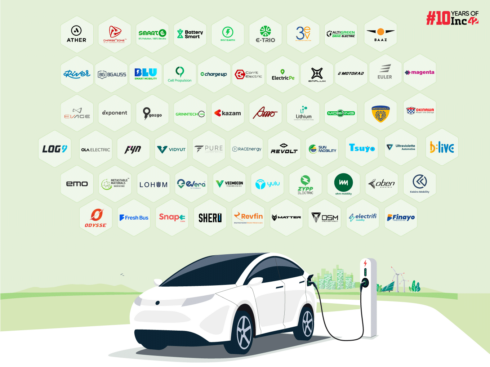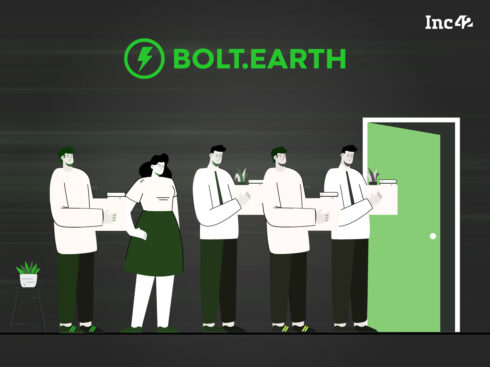
SUMMARY
The global electric vehicle and electric vehicle infrastructure market is expected to reach 4.18 Mn units by 2021
Petrol and diesel prices are at an all-time high and continue to rise almost every day
As an EV owner, you can prevent your EV's battery from draining by charging it regularly
With new norms emerging in the pandemic’s wake, what does the post-Covid-19 world have in store for EVs? A recent report suggests that last year, more than 14 Mn electric vehicles (EV) were on the road around the world, and that number has only gone up. In 2020, the global electric vehicle and electric vehicle infrastructure market is valued at 3.42 Mn units, and by 2021, it’s expected to reach 4.18 Mn units, at a CAGR of 22.1%.
Petrol and diesel prices are at an all-time high and continue to rise almost every day. In addition to this, the rising environmental consciousness has compelled people to explore alternatives to traditional fuel vehicles, which has led to an increased interest in EV ownership, driving an urgent need to step up EV capabilities and affordability in the country.
As we move to greener technologies, the need for affordable, safe, and powerful batteries is continuously increasing. Here’s how EV manufacturers, owners, fleet operators, and managers can ensure the battery’s safety and longevity:
Charge The Battery Regularly
As an EV owner, you can prevent your EV’s battery from draining by charging it regularly. Ensure that you maintain the State of Charge (SOC) of the battery between 50% and 80% – the SOC is essentially the energy left in a battery, relative to its capacity. Do not leave the battery at below 20% as it risks energy drain because of the vehicle’s electronics.
Avoid Fully Charging The Battery When Not In Use
It is important to note that a battery is continuously wearing out, even when not being actively used. It is harmful to let the battery sit idle at a 100% charge state. The energy stored gradually escapes. We refer to this as ‘self-discharging.’ And if a battery remains completely discharged for a lengthy period, the chemical reactions inside the battery could cause irreparable damage, negatively affecting battery life.
Avoid Deep Discharging The EV Battery
Discharging the battery completely before recharging can seriously reduce the life of the battery. Make sure you charge the battery when it’s at 30% to keep it from staying low for a lengthy period and avoid it from dipping any lower.
Avoid Extreme Temperatures And Fast Chargers
For any battery, various factors may affect the health of the cells present in the stack during charging. Although EVs come with adequate auxiliary cooling and heating options and a BMS for the battery, do not expose them to extreme temperatures. Factors such as external temperature during the charging process can degrade the cells. Also, refrain from using fast chargers as they damage battery packs quickly.
Read The Manual For Maintenance Information
The maintenance requirements are different for each car model, so it’s best to adhere to the manual’s maintenance information. See what specific care information your EV manufacturer has provided for laying up the car for long periods. Read the manual to check if it’s possible to turn off any battery draining functions.
Additional Tips to Care for Your EV
Your car should always be free of dirt and grime, but the current situation calls for some extra care. According to well-detailed research, the COVID-19 virus can linger on surfaces such as steel and plastic for up to three days. Clean your car carefully with sanitizer or disinfecting wipes and wash your hands thoroughly after each drive.
- Keep the tires of your EV over-inflated; this will ensure minimum contact patch with the road, reducing the odds of a flat spot. They lose air pressure over time, and when it’s time to drive, the pressure will be optimum.
- Make sure you lock the doors and windows of the EV properly.
- Park your vehicle in a safe and covered parking place.
Manufacturers should focus that EVs must undergo the same rigorous safety testing and meet the same safety standards required for conventional vehicles. EV-specific standards include limiting chemical spillage from batteries, securing batteries during a crash, and isolating the chassis from the high-voltage system to prevent electric shock.
Unlike ICE cars, EVs need very little maintenance but, the key part of an EV is the battery, which amounts to 40% of the total vehicle cost. There will be an inevitable standby battery drain even when the car is not in use. The battery loses power to keep applications such as the security system, low-level computer systems, telematics, etc. powered.
This standby power consumption is low, but it adds over time. If you leave your car unattended for a long time, you may have to deal with a dead battery. Fortunately, the EV battery can last for years and tens of thousands of miles if you take excellent care of it.
Currently, the Indian EV Industry remains at a nascent stage. Recent reports suggest that India’s growth in EVs is going to be focused initially on public transportation requirements – electric buses, two and three-wheelers, and fleet cars. Eyeing at personal vehicle options for EVs, by comparison, will require further development, assurances, and accessibility to a reliable infrastructure and broader ecosystem.
For the same, automotive and power sectors will need to be closely linked to work with some degree of synchronicity. Enabling this interdependent ecosystem will require policies and investments supporting domestic manufacturing of vehicles, batteries, and electric vehicle supply equipment (EVSE). Electricity distribution networks and grids will require upgrading to deliver to the higher power demanded by EVs projected in the future.


























